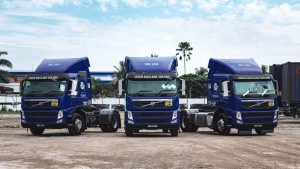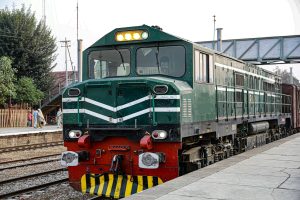Low-Drag Trailer Designs Increasing Trucking Efficiency
In today’s fast-paced world, efficient and sustainable transportation is critical for the success of businesses and economies alike. One key factor in achieving this is the design of trailers used for trucking. Traditional trailers have a high drag coefficient, resulting in higher fuel consumption and reduced efficiency. However, with advancements in technology and innovations in design, low-drag trailer designs have emerged as a solution to increase trucking efficiency. In this article, we will delve into the details of low-drag trailer designs and how they are revolutionizing the trucking industry.
The Problem with Traditional Trailers
Before we dive into the benefits of low-drag trailer designs, let us first understand the issue with traditional trailers. Traditional trailers have a flat front and square edges, resulting in a high drag coefficient – the measure of air resistance. This means that as the trailer is in motion, there is a constant fight against air resistance, requiring the truck to consume more fuel. According to studies, up to 64% of a truck’s fuel consumption is attributed to overcoming drag forces.
Moreover, traditional trailers are also limited in terms of cargo capacity. Due to their design, they cannot fully utilize the space available, resulting in a lower payload capacity and increased inefficiency in transportation. This becomes a major issue for businesses as it translates to higher operating costs and reduced profits.
The Rise of Low-Drag Trailer Designs
Low-drag trailers, also known as aerodynamic trailers, are designed to minimize air resistance and improve the performance of trucks on the road. The most significant difference between traditional and low-drag trailers is the shape of the front end and the addition of various aerodynamic features. These features include curved corners, boat-tailing, underbody fairings, and side skirts, all working together to reduce turbulence and drag.
The concept of low-drag trailers has been around for a while, but advancements in technology and engineering have made it more feasible and cost-effective. With the use of computer simulations and wind tunnel testing, designers can now develop trailers with optimal aerodynamic performance, making it a game-changer for the trucking industry.
Benefits of Low-Drag Trailers
The adoption of low-drag trailers has significant advantages for trucking companies. First and foremost, these trailers reduce air resistance, resulting in up to 10% fuel savings compared to traditional trailers. This not only contributes to cost savings but also leads to a reduced carbon footprint, making it an eco-friendly option.
Additionally, low-drag trailers have a higher cargo capacity due to their aerodynamic design. This means that more goods can be transported in a single trip, resulting in fewer trips and more efficient use of time and resources. Moreover, these trailers also reduce the wear and tear on trucks, leading to longer lifespan and lower maintenance costs.
The Road Ahead
The future of transportation is all about sustainability and efficiency. With the rise of e-commerce and increasing demand for speedy deliveries, the trucking industry must continue to evolve and adapt to meet these demands. Low-drag trailer designs are a step in the right direction, not only for the trucking industry but also for a greener planet.
In conclusion, low-drag trailers offer numerous benefits, including increased fuel efficiency, higher cargo capacity, and reduced environmental impact. With technology and innovation driving the evolution of trucking, we can expect to see a significant increase in the adoption of low-drag trailer designs in the years to come. As the old saying goes – a smooth ride makes for a happy driver, and low-drag trailer designs are paving the way for just that.











